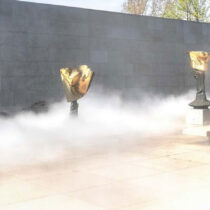When the department of paleoanthropology and speleology was founded in 1977, caves became included in the category of monuments so now any find coming from a cave is considered to be an archaeological find. The author of the article grasps the opportunity to point out what until now is wrong with the department. It seems, as he writes, that paleontological finds that lie in the open, remain unprotected by any law. As a result of this, places such as Pikermi have been turned into rubbish dumps. University digs are still regulated it seems by a law originating from 1936 whereby a foreign excavator is allowed to keep six items out of every kind of find. At universities, geophysics in archaeology is not taught as a science and there is no such thing as a museum of anthropology. The ministry of culture and sciences seems to have confused Archaeometry with Restoration. Apart from the exploration and protection of caves and paleoantropological sites the department’s goal is: a) to assist local departments of archaeology, b) to coordinate research, and cooperate with the tourist board (EOT), ministries and the private sector, c) to promote development of local districts in collaboration with local administration , and to promote the speleological wealth that exists in the country. The excavation of caves is a special matter under consideration, seeing that in caves there are to be found undisturbed layers of deposits and soil that offer important stratigraphic evidence for the study of prehistoric times mainly. This undisturbed sediment and soil to be found in the closed areas of caves is of tremendous advantage to research and led to the adoption of a special technique of excavation.
The Department of Paleoanthropology and Speleology. ( How it was founded and its legal status and purpose)
02 Aug 2012
by Archaeology Newsroom
- A
- A
- A


